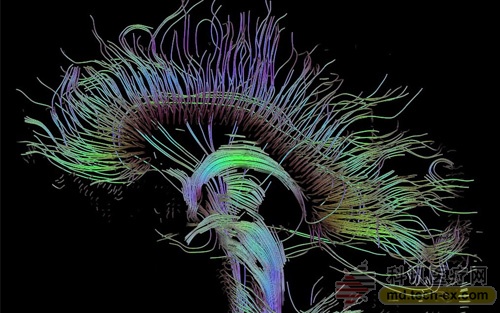Release date: 2017-02-24
Probably a myriad of self-study books and expert seminars have told you to tap the right brain potential and enhance creativity. Now, forget the "right brain myth" - a new study shows that creativity does not depend on the unilateral hemisphere of the brain, but the connection between the two hemispheres. The researchers found that those who were extremely creative had more nerve connections between the right and left brains. This study was published in Bayesian Analysis.

Statistician David Dunson from Duke University and Daniele Durante of the University of Padua analyzed the white matter connection network in 68 different brain regions of health university volunteers. The white matter of the brain is located beneath the external gray matter and consists of multiple bundles of axons that connect billions of neurons and transmit electrical signals between them.
A team led by Rex Jung, a neuroscientist at the University of New Mexico, collected the data using a special MRI technique called diffusion tensor imaging (DTI), which allows researchers to track all axonal paths based on water molecule motion through a living human skull. . It is then converted to a three-dimensional image by the computer - the connection diagram of the brain.
Jung's team used a combined test to assess the creativity of the participants. These tests include the ability to divergent thinking or the ability to give multiple answers to a question. Participants were asked to draw as many geometric designs as possible within five minutes. Or list as many new uses as possible for everyday items such as bricks or paper clips. In addition, participants filled out surveys on their achievements in 10 areas, including visual arts, music, creative writing, dance, cooking and science. These results were used to calculate the overall creative score for each individual.
Then, Dunson and Durante use computers to filter the data and identify differences in brain structure. They found no statistically significant differences in connectivity between men and women or within the cerebral hemisphere. However, when they compared the top 15% of the creative tests with the last 15%, they found that there was more connection between the right hemisphere and the left hemisphere of the brain with higher scores. In the frontal lobe of the brain.
Dunson says their approach can be used to predict whether a person will have a highly creative probability, based solely on the network structure of their brain. “Maybe by scanning a person's brain, we can know what they might be good at,†Dunson said.
The study belongs to a new field of development that has been in development for more than a decade - connectomics, which uses online science to understand the brain. Instead of focusing in isolation on a particular brain region, neural-connected histology researchers use advanced brain imaging techniques to identify and map a rich, dense network of connections between brain regions.
Dunson and colleagues are now developing statistical methods to discover whether brain connectivity changes with IQ, and the relationship between creativity and creativity is a controversial issue.
In collaboration with Paul Thompson, a professor of neurology at the University of Southern California, researchers also used their methods to detect early Alzheimer's disease to help distinguish it from normal aging. By studying the connected patterns in healthy and diseased brains, researchers and other scientists hope to better understand dementia, epilepsy, schizophrenia and other neurological diseases such as traumatic brain injury or coma.
“Data sharing in neuroscience is becoming more common than it was just five years ago.†Joshua Vogelstein of Johns Hopkins University said he created the Open Connectome project and processed the raw data for the study.
Understanding the huge data sets generated by brain imaging research is a challenge, Dunson said. Most statistical methods used to analyze brain network data tend to focus on estimating the properties of a single brain, such as which brain regions can serve as highly connected hubs. But each person's brain connections are different, and the techniques used to identify similarities and differences between individuals and groups are relatively backward.
Source: Bio-Exploration
Sample Release Reagent Kit Of COVID-19
The Sample Release Reagent Kit is intended for the pre-treatment of the samples to be tested. The substances to be tested in the specimens can be released from other substances to facilitate the use of in vitro diagnostic reagents or instruments.
Protein structure is rapidly destroyed by denaturation and biochemical reagents, releasing the nucleic acid.
DNA release reagent,RNA release reagent,viral release reagent,virus release reagent,sample release reagent kit
Shenzhen Uni-medica Technology Co.,Ltd , https://www.unimedicadevice.com